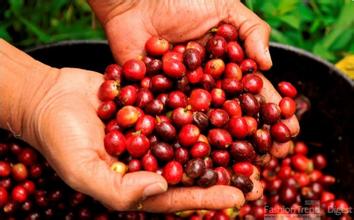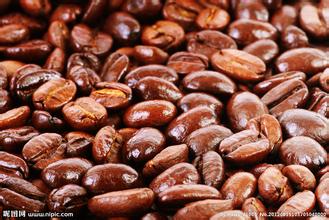Introduction to flavor description and taste treatment of coffee beans distinguished by Robusta and Arabica
Introduction to flavor description and taste treatment of coffee beans distinguished by Robusta and Arabica
"Arabica coffee beans" is synonymous with "Arabica".
Arabica enterprise claim
Open classification: coffee plant biological natural Rubiaceae
Arabica, (scientific name Coffea arabica, Coffee Arabica), also known as Arabica coffee, is an indigenous species of coffee grown on the Abyssinia Plateau of Ethiopia (present-day Ethiopian Plateau). According to textual research, it is the first artificially cultivated coffee variety in the world, one of the most important coffee tree species, accounting for 70% of the global coffee consumption. This kind of beverage has been cultivated in southwest Arabia for more than 1000 years. It was introduced into Europe through the Arab world in the 16th century and became a favorite drink all over the world.
Chinese name: Arabica English name: Coffee Arabica
Realm: phylum Botanica: Angiosperms, phylum angiosperm
Order: Gentianales: Rubiaceae: Rubiaceae
Genus: Coffeeae species: Arabica species C. arabica
Overview / Arabica Editor
Arabica coffee tree
Arabica Coffee Tree Atlas
Arabica coffee, also known as small-grain coffee and small-fruit coffee, is one of the most important coffee trees in the world. Its origin is Ethiopia's Abyssinia Plateau (present-day Ethiopian Plateau). In the early days, it was mainly used as medicine, and it developed the habit of baking and drinking in the 13th century. it was introduced into Europe through the Arab world in the 16th century and further became a favorite drink all over the world. Its excellent flavor and aroma make it the only coffee among these native species that can be drunk directly and alone. Because it has been monopolized by the Arab world for a long time, it is called "Arabian coffee" by Europeans. [1]
Historical Origin / Arabica Editor
In the early days, it was mainly used as medicine to eat. In the 13th century, it developed the habit of baking and drinking. In the 16th century, it was introduced into Europe through the Arab world, and further became a common favorite drink of people all over the world.
At first, all the commercial coffee in the world were small-grain coffee, but at the end of the 19th century, there was a large-scale disease, and growers began to look for other disease-resistant varieties. Small-grain coffee was still the main coffee variety in 2012, accounting for about 3% and 4% of the world's total coffee production. Arabica coffee accounts for about 65% of the world's coffee beans, with production of 48600 tons in 2012 and a total wholesale price of about $16 billion [2].
Although coffee shops are now full of variety, in the final analysis, there are only two kinds of artificial coffee, one is Arabica, the other is Coffea robusta (canephora), both of which are introduced from wild species. However, it has low resistance to drying, frost, diseases and insect pests, especially to leaf rust, the biggest natural enemy of coffee, so all producing countries are committed to improving varieties. For example, Sri Lanka, as we all know, used to be one of the most famous coffee producers in the past, but coffee farms were not spared by leaf rust at the end of the 19th century. Since then, Sri Lanka has turned to black tea, which is also the kingdom of black tea in India.
"Typica" iron pickup, the name sounds majestic, but in fact it is not so strong. It has weak physique, poor disease resistance, easy to catch rust leaf disease and less fruit yield. It is one of the oldest native varieties in Ethiopia, and many Arabica are derived from iron pickups!
The parietal leaf of the iron pickup is bronzed, and the bean grain is large, pointed, oval or thin. Everyone is familiar with the well-known Mantenin, Blue Mountain, Elephant Bean, Kona, Yunnan Dou …... Wait. They are all derived from iron pickups.

Important Notice :
前街咖啡 FrontStreet Coffee has moved to new addredd:
FrontStreet Coffee Address: 315,Donghua East Road,GuangZhou
Tel:020 38364473
- Prev

How big is a cappuccino coffee cup?-the difference between an Italian coffee cup and a single product
What is the size of a cappuccino coffee cup-the difference between an Italian coffee cup and a single product these two drinks are made from coffee and milk, but cappuccino is more knowledgeable and has always been the best material for studying character changes in Europe and the United States. The history of the word Cappuccino: the monks of the St. Franciscan Church (Capuchin), founded five years later in 1525, wore brown robes and pointed hats.
- Next

Introduction to the flavor description of Italian espresso produced by regional treatment method
Italian espresso Flavor description A small cup of coffee dominates coffee drinking habits all over the world. It can become latte, cappuccino, mocha, macchiato and so on. At present, there are more than 10, 000 kinds of espresso recorded, so Espresso (espresso) is a popular coffee drink in the world.
Related
- Beginners will see the "Coffee pull flower" guide!
- What is the difference between ice blog purified milk and ordinary milk coffee?
- Why is the Philippines the largest producer of crops in Liberia?
- For coffee extraction, should the fine powder be retained?
- How does extracted espresso fill pressed powder? How much strength does it take to press the powder?
- How to make jasmine cold extract coffee? Is the jasmine + latte good?
- Will this little toy really make the coffee taste better? How does Lily Drip affect coffee extraction?
- Will the action of slapping the filter cup also affect coffee extraction?
- What's the difference between powder-to-water ratio and powder-to-liquid ratio?
- What is the Ethiopian local species? What does it have to do with Heirloom native species?

